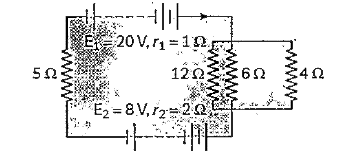If rc and rs respectively represents cuticular and stomatal resistances, the total resistance (R) could be expressed as
R = rc +rs
R = r – rs
1R=1rc+1rs
rR=1rc−1rc
The correct Answer is:C
To solve the question regarding the total resistance (R) in relation to cuticular resistance (RC) and stomatal resistance (RS), we can follow these steps:
1. Understanding the Components:
- Identify what RC and RS represent:
- RC = Cuticular Resistance
- RS = Stomatal Resistance
2. Total Resistance Formula:
- The total resistance (R) can be expressed using the formula for resistances in parallel:
1R=1RC+1RS
3. Rearranging the Formula:
- To find R, we can rearrange the formula:
R=1(1RC+1RS)
4. Interpreting the Formula:
- This formula indicates that the total resistance (R) is determined by the individual resistances (RC and RS) in a way that they work together in parallel.
5. Conclusion:
- Therefore, the expression for the total resistance (R) in relation to cuticular and stomatal resistances is:
R=1(1RC+1RS)
- Identify what RC and RS represent:
- RC = Cuticular Resistance
- RS = Stomatal Resistance
- The total resistance (R) can be expressed using the formula for resistances in parallel:
1R=1RC+1RS
- To find R, we can rearrange the formula:
R=1(1RC+1RS)
- This formula indicates that the total resistance (R) is determined by the individual resistances (RC and RS) in a way that they work together in parallel.
- Therefore, the expression for the total resistance (R) in relation to cuticular and stomatal resistances is:
R=1(1RC+1RS)
Similar Questions
The e.m.f and internal resistance of two cells are ɛ1,ɛ2 and r1 and r1 respectively,are connected in series with an external resistance R. Derive an expression for equivalent e.m.f and internal resistance.
View SolutionThe effective resistance of three equal resistances, each of resistance r, connected in parallel, is
View Solution
Knowledge Check
How much is the total resistance?
A30ωB20ωC1130ωD3011ωTotal resistance of the circuit:
 A10ΩB20ΩC5ΩD15Ω
A10ΩB20ΩC5ΩD15ΩFor series combination total resistance R will be:
A1R=1R1+1R2+1R3+....BR=R1R2R3.....CR=1R1+1R2+1R3+.....DR=R1+R2+R3+....
If L,R,C,andV, respectively , represent inductance , resistance , capacitance and potential difference , then the dimensions of L/RCV are the same as those of
View SolutionIf C represents capacitance and R represents resistance, then the unit of CR2 are
View SolutionLet l,r,c and v represent inductance, resistance, capacitance and voltage, resistance,capacitance and voltage, respectively. The dimension of lrcv in SI units will be :
View SolutionLet l,r,c and v represent inductance, resistance, capacitance and voltage, resistance,capacitance and voltage, respectively. The dimension of lrcv in SI units will be :
View SolutionA cell to emf. E and internal resistance r supplies currents for the same time t through external resistanceR1andR2 respectively. If the heat produced in both cases is the same, then the internal resistance is given by :
View Solution